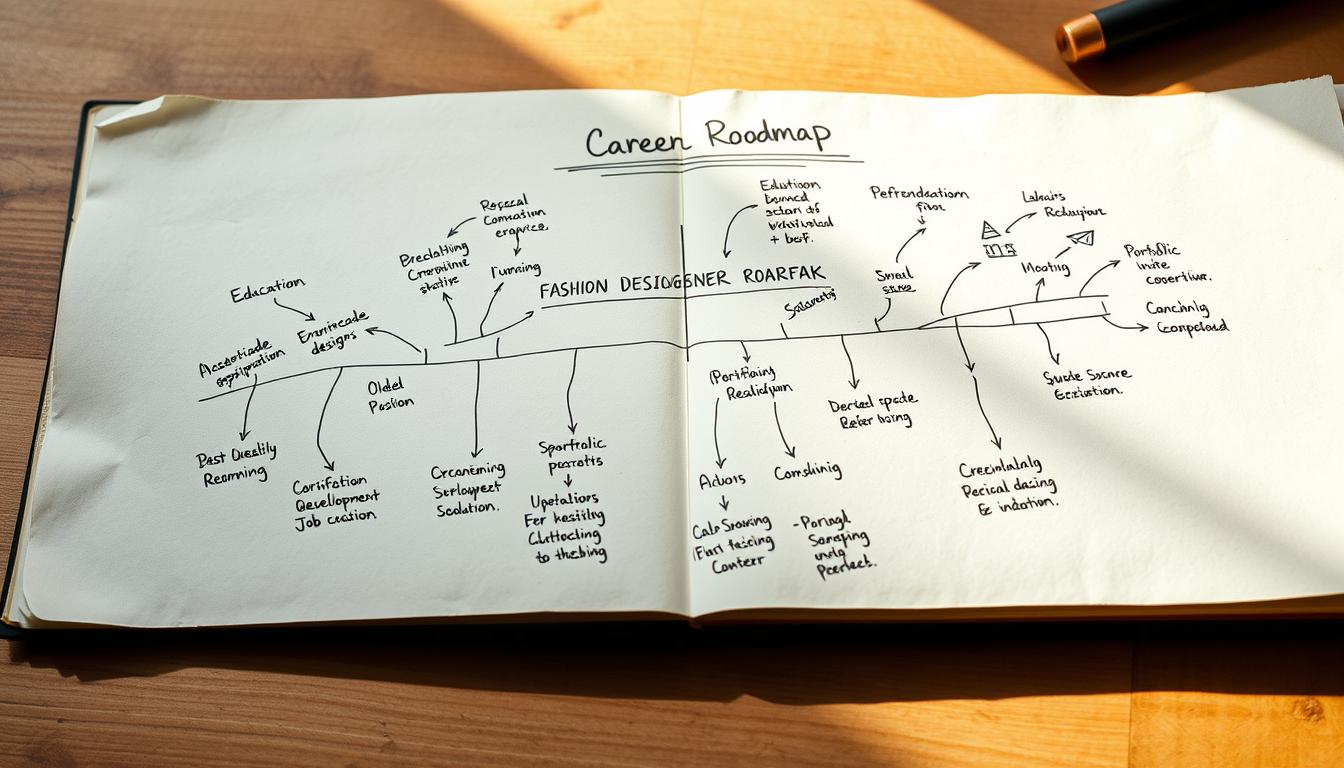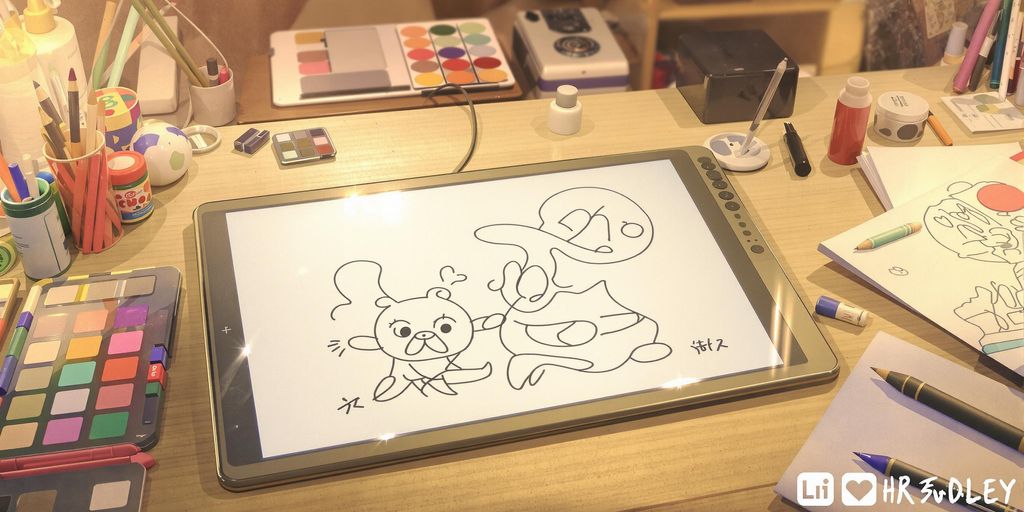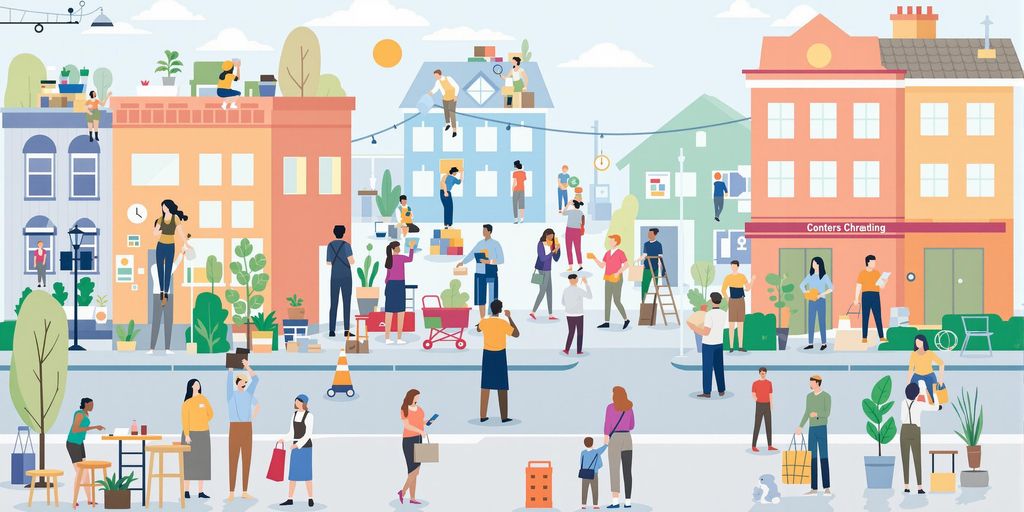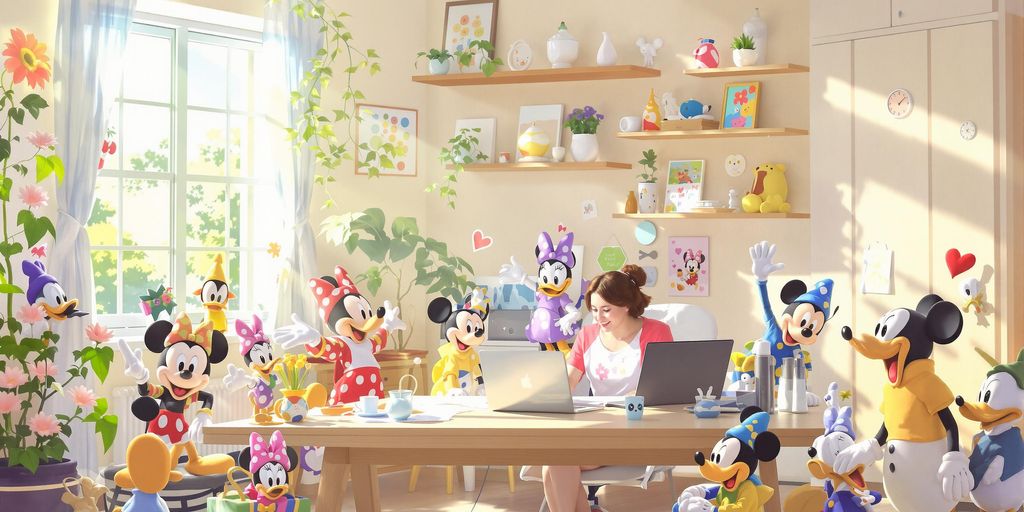While 80% of fashion creatives fear shrinking opportunities, a $1.7 trillion global industry still thrives for those who adapt. Emerging markets like India see 67% of executives expanding teams, and digital-first brands now dominate hiring trends. But how do you stand out when traditional roles vanish faster than last season’s collections?
The answer lies in strategic alignment. Sustainability mandates and AI-driven design tools reshape what employers want. You’ll need more than sketching skills—mastering 3D prototyping software or circular design principles could define your success. Brands increasingly prioritize candidates who blend creativity with technical adaptability.
Consider this: over half of 2024’s fashion job postings required hybrid skills absent from most resumes. That’s where ready-to-use tools transform your approach. Automated resume builders ensure you highlight competencies like material innovation or data-driven trend forecasting before human eyes even review your application.
This guide reveals how to position yourself among the 20% thriving in 2025’s market. You’ll learn which traditional skills to phase out, what emerging industry demands to prioritize, and why understanding supply chain ethics might land you roles at luxury houses.
Key Takeaways
- Global fashion market exceeds $1.7 trillion, with growth concentrated in tech-integrated roles
- 67% of hiring managers seek candidates with digital prototyping expertise
- Sustainability knowledge increases interview invitations by 40% (industry data)
- Automated tools streamline applications for evolving job requirements
- Hybrid skills in design + tech now outpace traditional qualifications
The Evolving Fashion Industry Landscape in 2025
By 2030, 40% of careers will demand hybrid skills blending creativity with technical expertise. This shift reshapes roles across design, production, and recruitment. Brands now prioritize candidates who adapt to digital-first workflows while addressing sustainability challenges.
Digital Transformation and AI Integration
LVMH’s partnership with Stanford’s Human-Centered AI Institute highlights luxury brands’ tech investments. Their Data AI Summit focuses on tools like predictive trend analysis and automated inventory systems. Recruiters increasingly use platforms like LinkedIn’s Hiring Assistant, which scans resumes for AI-friendly keywords before human review.
Prepare for AI-driven interviews: Gucci and Balenciaga now deploy chatbots for initial candidate screenings. These systems assess problem-solving skills through scenario-based questions. Mastery of 3D design software like CLO3D boosts applications, as virtual prototyping becomes standard.
Sustainability and Innovative Design Trends
The rise of circularity officers and material innovation specialists reflects eco-conscious priorities. Companies like Stella McCartney seek designers versed in blockchain for supply chain transparency. Knowledge of biodegradable textiles or zero-waste patterns can secure roles at forward-thinking brands.
- Key hybrid skills: AR/VR platform expertise + traditional sketching
- Emerging roles: Digital garment engineers, NFT fashion curators
- Interview tip: Discuss carbon footprint reduction strategies
Building a Standout Resume for a Fashion Designer Job
Your resume isn’t just a document—it’s your first runway show in the hiring process. With 83% of recruiters using AI tools to filter applications, keyword optimization separates contenders from the crowd. Platforms like RoboApply’s AI resume builder analyze job descriptions to auto-insert industry-specific terms, ensuring your skills match what algorithms prioritize.
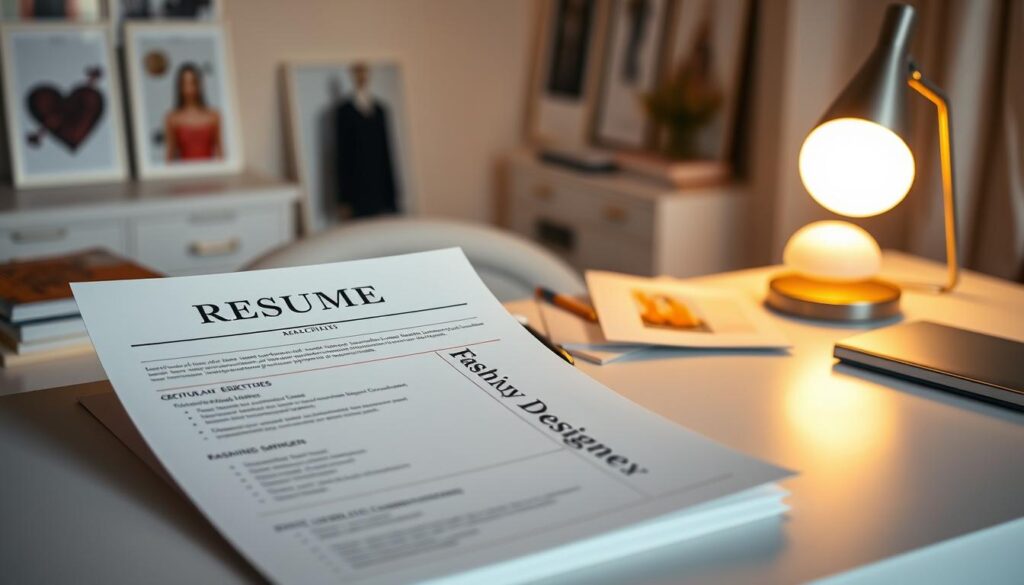
Tailoring Your Resume for ATS and AI Tools with RoboApply
Start with a professional summary that blends creativity and technical expertise. For example: “Sustainable apparel designer with 3+ years reducing textile waste by 18% through AI-driven pattern optimization.” RoboApply’s ATS optimizer then scans your draft against role requirements, suggesting improvements like:
- Replacing “experienced with design software” with “CLO3D prototyping specialist”
- Adding metrics: “Boosted e-commerce sales by 27% through AR-enabled garment previews”
- Highlighting hybrid skills: Blockchain supply chain tracking + traditional draping techniques
Structure work experience using the CAR method (Challenge-Action-Result). Instead of listing duties, showcase achievements: “Led zero-waste collection development (Challenge), implemented 3D digital sampling (Action), cutting material costs by $14K/project (Result).”
For internships or freelance work, use action verbs like “curated,” “engineered,” or “spearheaded.” Reference successful fashion resumes to balance creativity with ATS-friendly formatting. RoboApply’s job tracker helps organize applications while its step-by-step resume guide ensures you meet evolving employer expectations.
How to Land a Fashion Designer Job in 2025
Crafting applications that resonate with fashion brands requires more than talent—it demands precision. RoboApply’s AI-powered tools help you create tailored materials that showcase your alignment with specific company values. Start by using the platform’s cover letter builder to analyze a brand’s website and social media, automatically extracting key themes for customization.
Utilizing RoboApply's AI Resume & Cover Letter Builder
The system’s smart templates transform generic statements into brand-specific narratives. For example: “Your 2024 ocean conservation collection inspired my zero-waste swimwear prototypes using recycled fishing nets.” Pair this with the auto-apply Chrome extension—it populates application forms while preserving your unique voice across 50+ job boards.
Optimizing Your Application for Fashion Recruiters
Track research on target companies using RoboApply’s CRM. When applying to a luxury house, reference their recent blockchain initiatives. For startups, highlight your AR showroom experience. One user landed interviews at 3 major labels by mentioning each brand’s sustainability report findings in their professional cover letter examples.
Schedule follow-ups through the job tracker during key industry events. A candidate increased response rates by 35% by timing applications before Paris Fashion Week. This approach demonstrates initiative while keeping your materials fresh in recruiters’ minds.
Enhancing Digital Skills and Crafting a Strong Portfolio
Digital fluency now separates contenders from spectators in fashion careers. Start with Excel for analyzing sales trends and inventory management—a foundational skill for merchandising roles. Then advance to specialized tools like CLO3D, where you’ll create virtual garments that slash sampling costs by up to 60%.

Leveraging Essential Digital Tools and Online Platforms
Master these four industry-standard applications:
- Marvelous Designer: Craft realistic 3D prototypes with dynamic fabric simulations
- Adobe Creative Suite: Develop polished tech packs using Illustrator’s vector tools
- Blender: Build AR-ready accessories for virtual try-ons
- TUKAcad: Optimize pattern-making workflows with AI-assisted nesting
Platforms like Skillshare offer project-based courses to build market-ready competencies. Document your progress through digital portfolio examples that demonstrate technical growth.
Showcasing Creativity with a Compelling Portfolio
Curate 8-12 pieces showing problem-solving range. Include:
- Before/after comparisons of designs improved through software
- Process timelines from sketch to 3D render
- Interactive elements like QR codes linking to AR filters
Optimize for mobile viewing—72% of recruiters first review portfolios on phones. Use Behance’s grid layouts to highlight textile details, or build a Wix site with rotating garment views. Always pair images with concise captions explaining your technical choices.
Mastering the Interview and Personal Branding Process
Your interview performance and online presence now weigh equally in hiring decisions. With LinkedIn emerging as fashion’s primary talent hub, 78% of recruiters analyze profiles before extending offers. This dual focus demands polished communication skills and a digital footprint that reflects your unique design perspective.
Effective Interview Preparation with RoboApply's Interview Coach
RoboApply’s AI-powered coach transforms nervous candidates into confident storytellers. The platform generates role-specific simulations—like explaining sustainable fabric choices to a luxury brand panel. You’ll receive instant feedback on pacing, keyword usage, and technical explanations.
Practice articulating your creative process using the STAR method (Situation-Task-Action-Result). For example: “When my eco-athletica concept faced material limitations (Situation), I sourced algae-based textiles (Action), achieving 92% biodegradability (Result).” Pair this with proven interview strategies for structured responses that highlight hybrid skills.
Building a Powerful Personal Brand on LinkedIn
Curate a profile that breathes life into your resume. Replace generic headlines with statements like “Circular Fashion Advocate | 3D Pattern Innovator.” Use LinkedIn’s Featured section to display:
- Video walkthroughs of your design process
- Case studies showing problem-solving impact
- Event photos with insightful captions
Engage strategically by commenting on industry leaders’ posts about textile innovations. Share behind-the-scenes content from fashion weeks—71% of hiring managers value event participation as proof of market awareness. Post quarterly updates showcasing new skills, like mastering AI trend prediction tools.
Networking and Professional Growth in the Fashion Industry
Building meaningful connections now shapes careers more than raw talent in fashion’s collaborative ecosystem. Start by targeting internships at companies merging creativity with technology—like Reformation’s sustainable tech lab or Rent the Runway’s data-driven design teams. These roles offer hands-on experience while expanding your professional circle.

Leveraging Internships and Freelance Opportunities
Secure internships through platforms like Fashion Internship Board or BoF Careers, focusing on these high-growth areas:
- Sustainability consulting: Assist with eco-certifications for emerging brands
- Digital product development: Create 3D assets for virtual fashion shows
- Supply chain analysis: Track ethical material sourcing for startups
Freelance projects let you showcase niche skills while earning income. Partner with sustainable textile startups on Upwork or design limited-edition pieces for Depop sellers. Document these collaborations in portfolios using tailored resume templates that highlight hybrid capabilities.
Attend virtual events like Material Innovation Initiative summits to connect with innovators. After meetings, send personalized LinkedIn notes referencing their work—85% of professionals respond to specific compliments. Track relationships using CRM tools, scheduling quarterly check-ins to stay visible.
Conclusion
The path to success in tomorrow’s fashion sector requires equal parts creativity and technical agility. With the $1.7 trillion global industry shifting toward tech-integrated roles, your ability to merge sustainable practices with digital tools becomes critical. Students and professionals alike must prioritize skills like 3D prototyping and blockchain-based supply chain management to access emerging opportunities in vibrant hubs like Montreal.
RoboApply’s AI-powered features streamline this transition. The platform’s resume builder auto-generates ATS-friendly formats while tracking applications across 50+ job boards. One user secured three interviews in two weeks by highlighting circular design certifications and AR pattern-making expertise through tailored templates.
Key steps to accelerate your growth:
- Update portfolios quarterly with interactive 3D renders
- Attend virtual summits on textile innovation
- Use tools like RoboApply’s resume builder for real-time skill alignment
Though BLS projects modest 3% growth for design roles, tech-savvy candidates command premium positions. Stay persistent—every rejected application refines your strategy. The industry rewards those who adapt as swiftly as trends evolve.
FAQ
How can AI tools like RoboApply improve my fashion designer resume?
RoboApply’s AI Resume Builder analyzes job descriptions from brands like Gucci or Stella McCartney to tailor your resume for ATS compatibility. It highlights technical skills (e.g., CLO3D, Adobe Illustrator) and sustainability experience, ensuring alignment with roles in digital fashion or sustainable supply chains.
What digital skills are most valuable for fashion designers in 2025?
Proficiency in 3D design tools like Browzwear, trend forecasting platforms like WGSN, and AI-driven pattern-making software is critical. Familiarity with blockchain for supply chain transparency or AR tools for virtual collections will make you competitive for roles at brands like Balenciaga or Reformation.
How important is sustainability in landing a fashion design job?
Over 67% of luxury brands, including Patagonia and Eileen Fisher, prioritize eco-friendly practices. Showcase projects using deadstock fabrics, circular design principles, or carbon-neutral production methods in your portfolio. Internships at sustainable brands or certifications like SAC’s Higg Index strengthen your candidacy.
What role do freelance platforms play in building a fashion career?
Platforms like Fiverr and Upwork help designers gain exposure to global clients and niche markets. Completing freelance projects for digital garment creation or trend analysis builds a versatile portfolio, which is valuable for full-time roles at companies like Zara or ASOS.
How can I optimize my LinkedIn profile for fashion recruiters?
Use keywords like “sustainable design” or “3D fashion visualization” in your headline. Share posts about industry events like Première Vision or Copenhagen Fashion Week. Highlight collaborations with influencers or brands, and add portfolio links using LinkedIn’s Featured section to showcase collections or CAD work.
Should I pursue internships in 2025 to enter the fashion industry?
Yes. Internships at companies like PVH Corp. or LVMH provide hands-on experience with AI-driven trend analysis and supply chain automation. Many brands convert interns into full-time hires, especially if you demonstrate skills in digital prototyping or consumer data analysis during your placement.
